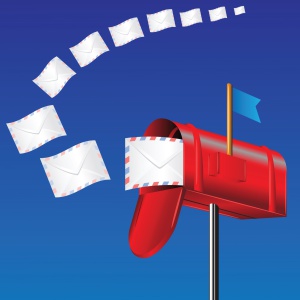There are hundreds of metrics you can track to measure the health of your business–the shear number of possibilities is overwhelming.
Even if you narrowed your options to the ones most appropriate for a software as a service app like yours, that still leaves you with dozens to choose from.
And while you’re trying to figure that out, you’re hearing some people say that you should track 10 different metrics, while others are saying you should track just one.
How do you make sense out of all this?
How do you get started with SaaS metrics and still stay sane?
And what are the most important metrics?
Collect plenty of metrics, but track just one or two in real-time
Before we look at which metrics you should track, here’s a hint that’ll help you keep your sanity: While you need to measure more than just one or two metrics to have a good understanding of your business, you don’t need to track multiple metrics day to day.
In fact, many metrics cannot be tracked in real time until you have quite a lot of customers. Until you hit that point, the figures may fluctuate wildly or flat out mislead you–even when you use averages. Running a business is an emotional roller coaster on its own, so it’s often best not to track numbers that are up one day and down the other.
Instead, it’s better to sit down once per month and review all of your metrics together. This will help you see the big picture of how your business is doing, and you’ll find that you have the confidence to relax and not try to follow everything all the time. During this review, it’s a good practice to pick one metric that best represents the direction you want to take your business and then only check up on that metric until your next monthly review.
That way you don’t miss important things and can still keep your focus. It’s like having a monthly business improvement theme.
What are the most important SaaS metrics?
Every business approaches metrics differently and the importance of different metrics depends on what stage your business is in.
But if you’re new to tracking metrics, these three are a good starting point:
- Monthly Recurring Revenue
- Conversion Rate
- Churn Rate
These metrics cover the whole SaaS customer life-cycle: A customer finds you, buys a subscription, stays for a while, and finally leaves.
1. Monthly Recurring Revenue
Monthly recurring revenue tells you how much of the money you’ve made this month will come in again next month.
Many businesses use revenue to track their performance, but SaaS businesses should use recurring revenue instead.
Tracking MRR separately from other revenue is important for two reasons:
- It’s the best metric to measure SaaS financial performance.
- You’ll need it later to calculate other financial SaaS metrics, like average revenue per user and customer lifetime value.
Monthly recurring revenue is calculated by summing up the revenue coming from subscriptions, then splitting it up between the months when you deliver the service.
When you sell just monthly subscriptions, your MRR will be the same as your revenue. But things change as soon as you offer annual subscriptions. One annual subscriber pays 10 to 12 times as much upfront as a monthly subscriber. At that point your books show a big spike in revenue–yet you didn’t add any more customers than you did in the previous months.
When revenue stops reflecting business performance, MRR solves the problem. MRR splits the revenue from an annual subscription to 12 months and makes the figures comparable again. That way you can see if you are making progress or not.
MRR is the number one metric for any SaaS business. Many businesses even use it to calculate recurring profit. It’s a very powerful and versatile metric– there’s so much you can do with it!
If you sell only annual subscriptions, you can use annual recurring revenue instead. It’s the same metric, only with a different measurement period.
2. Conversion Rate
Conversion rate measures how good you are at acquiring new customers. It shows how many people who you reached actually bought a subscription. So if you sent an email campaign to 100 people and one of them bought a subscription, you have 1% conversion rate.
Tracking your conversion rate is important because you want to know how your marketing performs and where you can improve it.
For example, you may find that you want to improve your landing page. If you know the conversion rate, you’ll know if the new page is better than the old one.
This is often the very first metric that SaaS businesses track. After all, getting customers is the first step.
Many businesses also track intermediate conversion rates for any steps that the prospect must complete before subscribing. Measuring this conversion funnel can help you improve each step in the process separately.
Unlike other metrics, conversion rate is calculated from user events. Most financial metrics can be reconstructed later since there are actual payments involved. But if you don’t track what your users are doing, that data is lost forever.
So get started with event tracking early on. It’s also a good idea to avoid putting your eggs to a single basket. I often meet customers who’d need to dig up information from their event data, just to find out they either haven’t collected it or it’s very hard to export.
3. Churn Rate
Churn rate measures how good you are at keeping your customers. It shows how many people canceled their subscription instead of renewing it. So if 100 subscriptions came up for renewal this month and one canceled, you have a 1% churn rate.
Churn rate is important because it sets a limit on how big your recurring business can grow. A customer comes in and you get to charge him X times before he leaves. Churn rate helps you calculate the X, the number of months in a customer lifetime, which you can apply as a multiplier to your revenue.
If the churn rate is high, this revenue multiplier is small and you need a large amount of new customers each month to keep on growing. But if churn rate is small, you’ll need fewer new customers to continue growing.
This is such an important lever that many SaaS businesses are obsessed with churn rates. There are several variations in how churn rate can be calculated and it is common to track several of them for different purposes.
Customer churn rate is the one presented here. MRR churn rate measures the loss of recurring revenue instead of customers. Net churn rates are more rough figures that include also upgrades and downgrades and aren’t normalized.
The important thing is to use the same formula every month so you can measure your progress.
How do I get metrics like these?
Some years ago the answer would have been to calculate them yourself. But nowadays there are plenty of tools to help you.
Google Analytics is great for collecting user events. You can even store an identifier that allows you to track individual customers–as long as you don’t use name or email. Instead, use the customer’s ID from your database or payment processor. Google Analytics can do almost anything, but the learning curve is quite steep.
Plenty of SaaS businesses also use tools like KISSmetrics or MixPanel. You can easily integrate to many event-based analytics apps via Segment.io. Check out their integrations page to find a good list of analytics tools.
Unfortunately the financial metrics shown in the event-based tools are all too often inaccurate. The problem isn’t the calculations–it’s the way they collect the data. It’s easy to mess up when integrating tools together, which means lost data and inaccurate results.
Newer analytics tools designed specifically for SaaS apps solve that problem by reading the data directly from the payment gateways. FirstOfficer.io and BareMetrics can reconstruct financial metrics from the day you started using Stripe. There are also other similar tools in development, and other gateways should be supported in the future.
Bottom Line
Keep yourself focused by evaluating the big picture (with all the metrics you have) just once per month, then keep an eye on one or two key metrics throughout the month.
And don’t be afraid to start small. Measuring monthly recurring revenue, conversion rate and churn rate is a good first step.
 Jaana Kulmala
Jaana KulmalaJaana Kulmala is the founder of FirstOfficer.io. She writes at HappyBootstrapper.com, where she shares ideas for building businesses that are enjoyable to run and using metrics to keep them healthy and growing.


